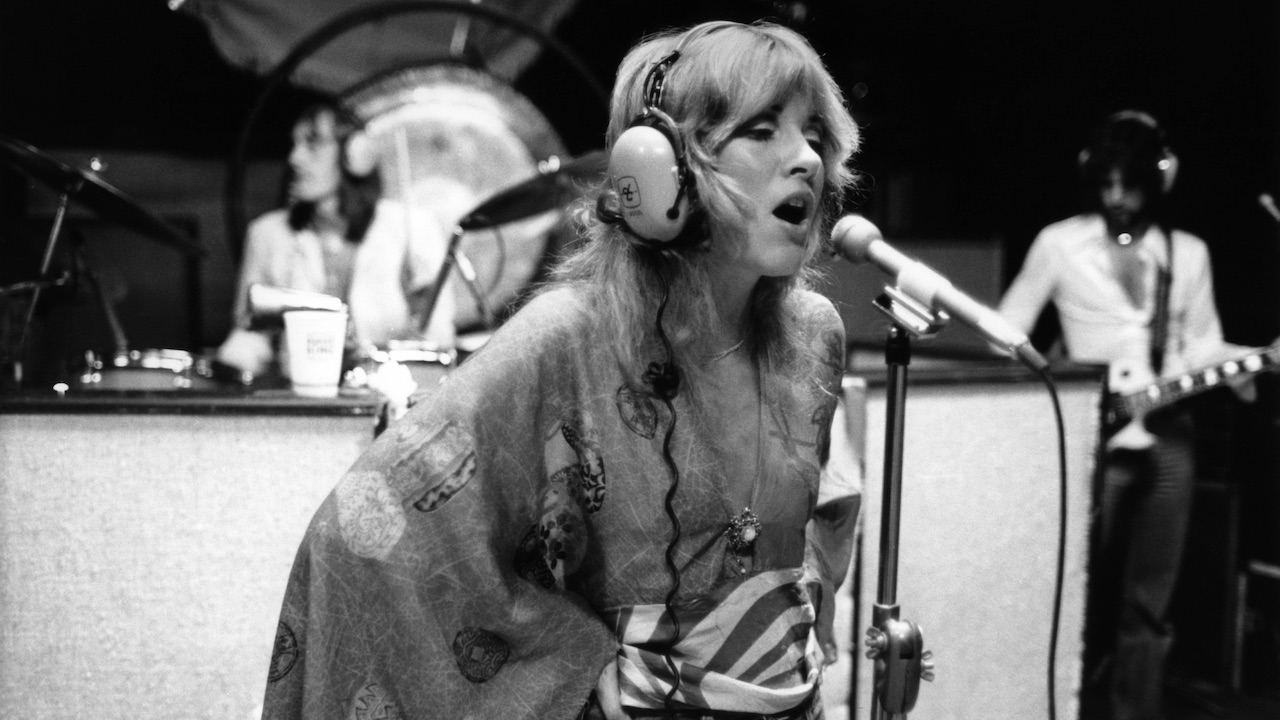
In February 1976, Fleetwood Mac entered the Record Planet studio in Sausalito, California to begin work upon their 11th studio album, with engineers Ken Caillat and Richard Dashut.
The band's self-titled tenth album, the first to feature vocalist Stevie Nicks and guitarist/vocalist Lindsey Buckingham, had been a huge success in the US, reaching number one on the Billboard 200 chart, and spawning three top 20 singles, but if the group were in great shape commercially, emotionally, things were fraught. Before the Fleetwood Mac touring cycle was complete, keyboardist/vocalist Christine McVie announced that she was leaving her husband John, the band's bassist, and started seeing the group's lighting director, Curry Grant. Boyfriend and girlfriend when they joined the band, Buckingham and Nicks were having relationship problems too, as was bandleader Mick Fleetwood, who had recently learned that his wife Jenny was having an affair with his best friend. Understandably, such tensions spilled over into the studio, making the atmosphere highly-charged from week one.
“I thought I was going to be making a regular album,” Ken Caillat told Mojo magazine's Mark Blake when discussing the making of Rumours in 2013. “Then I heard this yelling, and saw Chris throw a glass of champagne in John's face. Then Stevie and Lindsey started having an argument over the microphone. Then Mick walked in with tears in his eyes as he'd just got off the phone to his wife. I started to think it was contagious.”
Matters were hardly helped by the fact that the band and their hired engineers hadn't worked together before, and were very much feeling one another out in the first weeks in the studio. Speaking to Music Radar in 2012, Caillat recalled that he thought that he and Dashut might be sacked on week one, when they spent five days working upon drum sounds on the first track being recorded, The Chain, the only song on the album bearing writing credits from all five band members: “the band thought we were clueless,” Caillat admitted.
A sizeable communal bag of cocaine on the studio mixing desk probably didn't help either.
“When it comes to these war stories about our substance abuse, I am the prime candidate," Mick Fleetwood admitted to Mark Blake, having previously confessed that the group's drug dealer would have received a credit on the album had he not been murdered before the album was released. “I was very open about my cocaine use... I always imagine us making rumours was a bit like Paris in the 1920s.”
“You felt so bad about what was happening that you did a line to cheer yourself up," Stevie Nicks added. “We honestly thought that it couldn't harm us. That it wasn't addictive. How wrong we were.”
The conditions made the studio sessions quite the experience for Ken Caillat.
“There were fights, breakups, drinking, drugs..." he recalled to Music Radar. "We all indulged in substances. But I had to be a therapist and record producer. When everything was insane, I had to be sane. If there was a rule book, nobody gave me one.”
“A lot of Lindsey’s lyrics sparked fights with Stevie," the engineer remembered. “I didn’t know exactly what was happening at the time, but words were flying around, particularly Lindsey’s, about their breakup. Stevie hated when Lindsey got even a little literal. The minute Lindsey would start singing his lyrics, Stevie stormed out and the session would end.
Caillat recalled the recording of You Make Loving Fun particularly fraught.
“I remember when we were doing background vocals, Stevie and Lindsey were having an argument," he told Music Radar. “Vicious name-calling – ‘you motherfucker’ this, 'you fucking bastard' that. Back and forth it went. The tape would start rolling and they’d sing, ‘Yooooooou make loving fun,’ just beautiful, two little angels. The tape would stop and they’d be calling each other names again. They didn’t miss a beat.”
“They were writing these songs about and to each other,” Mick Fleetwood told Mark Blake, "and then singing them on the same mike. I don't know how they did it. [Fleetwood Mac's record label] Warners were terrified. I had executives phoning up and asking, 'Do we still have a band, Mick?' And I said, Yes, because we will not stop what we are doing for anything - even if we have to crucify ourselves... We were lucky to get out alive.”
Ultimately, all the pain, all the heartache, all the tension, paid off. Released as the album's first single in December 1976, Go Your Own Way, written and sung by Lindsey Buckingham, became the group's first top 10 hit in the US. And released on February 4, 1977, Rumours went on to spend 31 (non-consecutive) weeks stayed at the top of the Billboard 200, and also hit number one in the UK, Australia, Canada and New Zealand. It is now the 12th biggest-selling album of all time.







